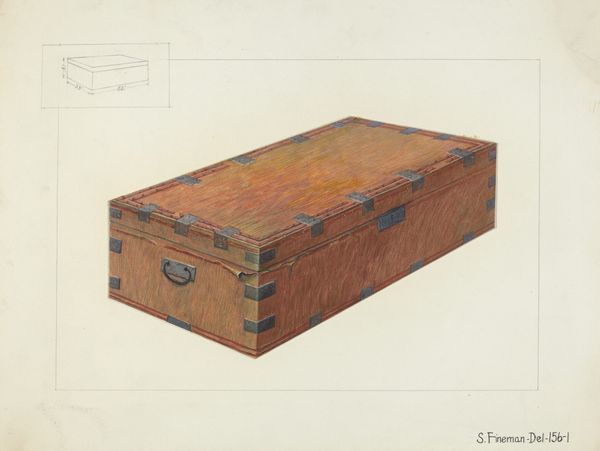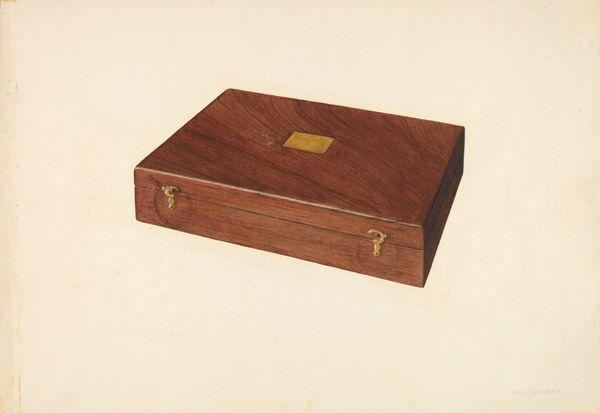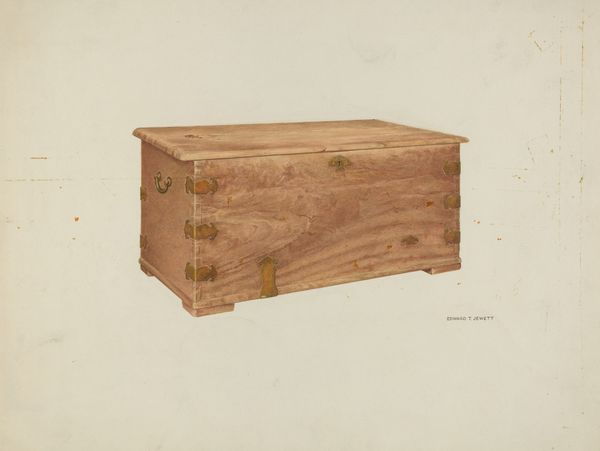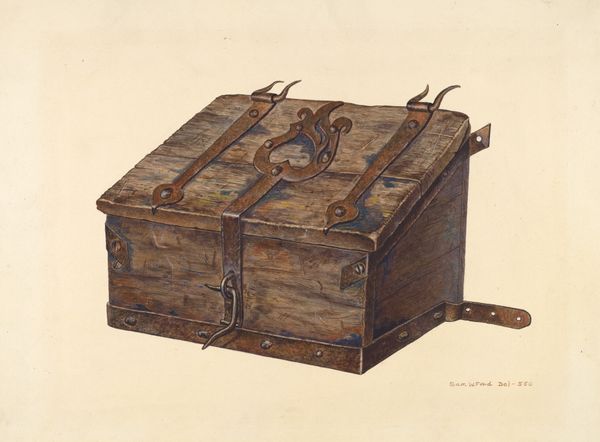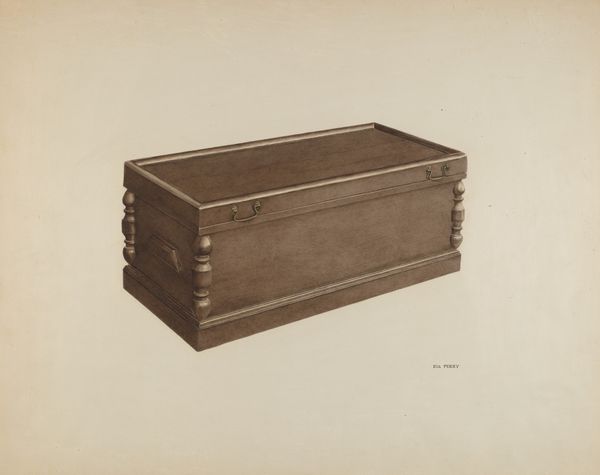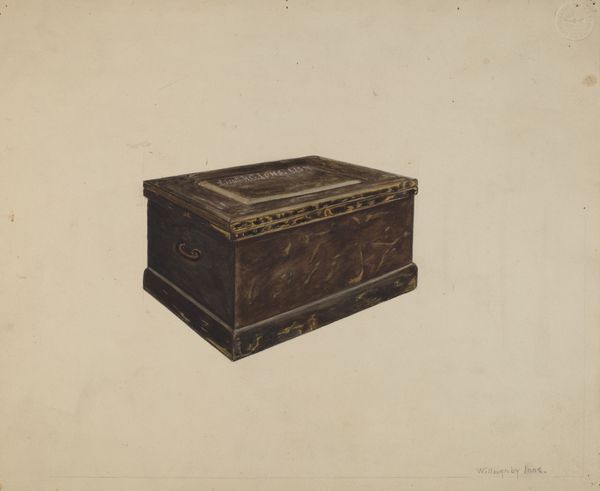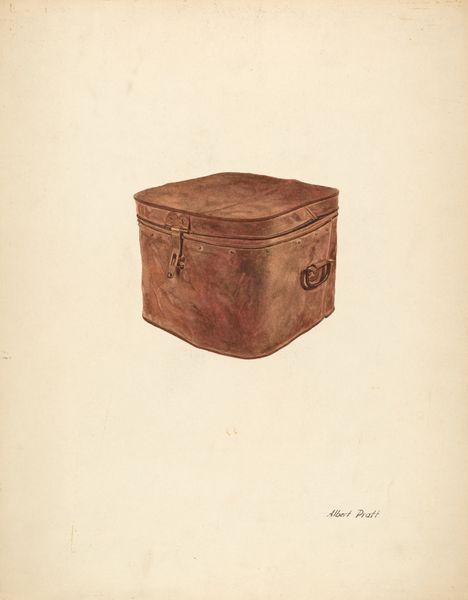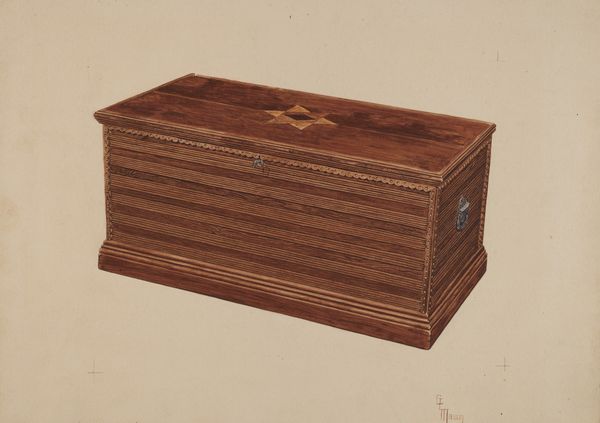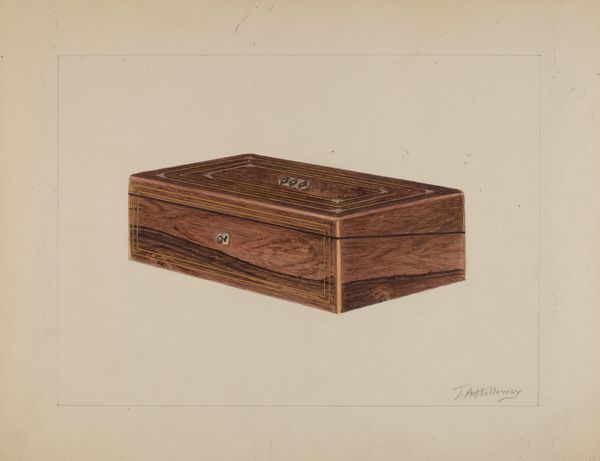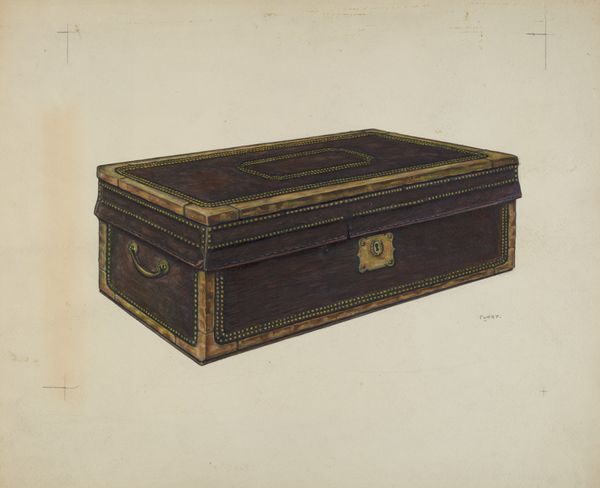
Dimensions: overall: 26.2 x 34.9 cm (10 5/16 x 13 3/4 in.) Original IAD Object: 41 1/2" long; 19 1/2" wide; 16 1/2" high
Copyright: National Gallery of Art: CC0 1.0
Editor: So, here we have "Chest," a watercolor drawing by Edward L. Loper, circa 1936. The texture is quite remarkable; it makes me wonder about the construction of this object and the labor involved. How do you interpret this work? Curator: For me, it's all about materiality and the means of production. The rendering of the wood grain, the visible joins, the lock—these details speak to the chest’s function as a container, but also to the societal value placed on storage, privacy, and ownership during the 1930s. Editor: I hadn’t considered it as a reflection of those values. It feels very everyday to me. Does the choice of watercolor, rather than oil paint, influence your interpretation? Curator: Absolutely. Watercolor, often associated with sketching and preliminary studies, here elevates the ordinary to a subject worthy of artistic attention. It challenges the hierarchy between 'high art' and the everyday object. Loper prompts us to consider: Who owned this chest? What purpose did it serve? The answers lie in the socio-economic context of its creation and the labor materialized within it. Editor: That's a really interesting point. Looking at the hardware and the way the wood seems pieced together, you can imagine the carpenter and their tools...it humanizes the object, almost. Curator: Precisely. Loper asks us to focus not only on the aesthetic but the hands, the materials, and the historical conditions that brought this functional object into being. Consider, too, the distribution of these types of objects during the Depression; where would something like this have been situated, and what social function would it fulfill for the owner? Editor: That’s given me a whole new perspective. I'd always looked at art for its beauty, but seeing it as a record of labor and material processes...that’s something else. Curator: It’s a lens through which art can illuminate history, isn't it? Hopefully, you have gained a greater awareness of the art-making practice as cultural reflection.
Comments
No comments
Be the first to comment and join the conversation on the ultimate creative platform.

